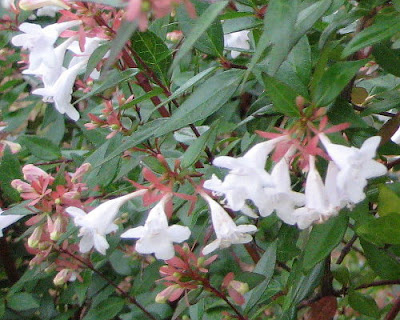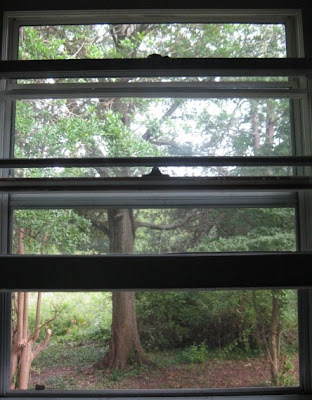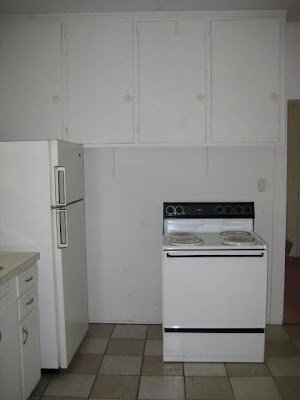
 This is absolutely the most haphazard garden I've ever had. For one thing, we
started late. Fortunately we live in a part of the US that has a long growing
season. Even so, I would ordinarily have started with a soil test after
carefully considering all possible garden locations. We would have tilled deep
and added one truckload of manure and another of any other organic matter we
could get our hands onto. I would have planned the whole thing out and known
exactly what I wanted and where. I would have calculated how much we need to
plant for a year's supply, and bought heirloom seeds with the plan of saving my
own for next year. I would have started careful records of planting dates,
harvest dates, etc.
This is absolutely the most haphazard garden I've ever had. For one thing, we
started late. Fortunately we live in a part of the US that has a long growing
season. Even so, I would ordinarily have started with a soil test after
carefully considering all possible garden locations. We would have tilled deep
and added one truckload of manure and another of any other organic matter we
could get our hands onto. I would have planned the whole thing out and known
exactly what I wanted and where. I would have calculated how much we need to
plant for a year's supply, and bought heirloom seeds with the plan of saving my
own for next year. I would have started careful records of planting dates,
harvest dates, etc. However, we got here later in the season than we hoped, and were so overwhelmed
with everything that needs to be done (house, yard, garden, etc), that I threw
all planning to the wind and said to Dan, "Something is better than nothing."
However, we got here later in the season than we hoped, and were so overwhelmed
with everything that needs to be done (house, yard, garden, etc), that I threw
all planning to the wind and said to Dan, "Something is better than nothing."If you've ever started a garden in a place that was formerly lawn, then you know that grass is stubborn to give up its claim to the ground. That's why lots of folks build raised beds. Dan is not too keen on these, as he loves to get behind a tiller.
 I wasn't too keen on them this year either, as I knew it would take awhile
before we could get them built. Dan ended up renting a tiller, a lightweight
rear tine Toro. I'm sorry to report that it was no better than a toy tiller.
With 4 inch tines it barely scratched the surface of the soil. I told him to
never mind and reminded myself that
Ruth Stout
had done a whole lot more with a whole lot less.
I wasn't too keen on them this year either, as I knew it would take awhile
before we could get them built. Dan ended up renting a tiller, a lightweight
rear tine Toro. I'm sorry to report that it was no better than a toy tiller.
With 4 inch tines it barely scratched the surface of the soil. I told him to
never mind and reminded myself that
Ruth Stout
had done a whole lot more with a whole lot less.As the seeds began to come up, the grass started to come back. To hopefully smother that, I first mulched with newspaper and leftover packing paper, covering that with a layer of wood chips and leaves.

 We bought one load of wood chip mulch, but quickly abandoned that in favor of
plain ol' leaves. Never mind that most people rake theirs out of their yard and
we're hauling them in. At $21 a bobcat bucket scoop for chipped mulch, I prefer
to use what's handy. And free. Besides, I didn't like the smell of the boughten
commercial stuff.
We bought one load of wood chip mulch, but quickly abandoned that in favor of
plain ol' leaves. Never mind that most people rake theirs out of their yard and
we're hauling them in. At $21 a bobcat bucket scoop for chipped mulch, I prefer
to use what's handy. And free. Besides, I didn't like the smell of the boughten
commercial stuff.As it is, the neighbors think we're nuts. The friendly couple across the street came over to introduce themselves while we were beavering away in the garden and stayed to chat awhile. As they left, I overheard him ask her, "Did you find out what the newspaper was for?"
 Unfortunately for all our neighbors, we are not manicured lawn and ornamental
type of folks. Ours will be an edible, medicinal, and dye plant landscape. We
believe that the land should be allowed to be productive in a more realistic
way, one that benefits us and helps meet our needs. We take our stewardship of
it seriously, and plan to nurture and care for it in turn. Dan wants every square
inch of this place to be productive in a self-sustaining way.
Unfortunately for all our neighbors, we are not manicured lawn and ornamental
type of folks. Ours will be an edible, medicinal, and dye plant landscape. We
believe that the land should be allowed to be productive in a more realistic
way, one that benefits us and helps meet our needs. We take our stewardship of
it seriously, and plan to nurture and care for it in turn. Dan wants every square
inch of this place to be productive in a self-sustaining way.At first I wasn't too keen on having the garden so close to the road. But twice I've seen a deer in the back field, so perhaps for this year, this is a good place to start.
 So far I've bought eight tomato plants from a local nursery, along with a bell
pepper plant. I've planted okra, corn, pumpkins, butternut squash, cucumbers,
straightneck summer squash, green beans, acorn squash, and some sunflowers.
So far I've bought eight tomato plants from a local nursery, along with a bell
pepper plant. I've planted okra, corn, pumpkins, butternut squash, cucumbers,
straightneck summer squash, green beans, acorn squash, and some sunflowers.I bought a lot of 25 cent seeds and was happy to discover that quite a few of them are heirloom varieties. Of these I can save seeds for next year. The pumpkins (on left), are "Small Sugar." I like to grow the small pie pumpkins rather than the big ones used for jack-o-lanterns. The small ones are much better flavored.
I still have a lot of mulching to do and of course some weeding. Dan just put up the bean poles for me, but I will need to run the string for the runners to grab on to. I need a few more tomato cages or stakes as well.
I also need to get a rain gauge and some soaker hoses. We've had a lot of rain, but I expect it will be dryer in July and August and I'll need to irrigate a bit. And I need to have a soil test done!

I'm not sure how much we'll harvest, but we plan to eat as much as we are able and can, freeze, dehydrate, or otherwise store the rest. I don't have a root cellar yet, but will find a way to store those pumpkins and winter squashes.
In the fall, I hope to plant cool weather vegetables: lettuce, radishes, peas, broccoli, etc, And maybe some root crops such as carrots, turnips and beets. We have clay soil, so it may take a few years to get it to the point where root crops will do well.
 This winter we'll have more time to plan, and will have a better idea of the
path of the sun. I have confidence that next year's garden will be better. And
larger. I'm just thankful to have my hands in the soil again.
This winter we'll have more time to plan, and will have a better idea of the
path of the sun. I have confidence that next year's garden will be better. And
larger. I'm just thankful to have my hands in the soil again.








































